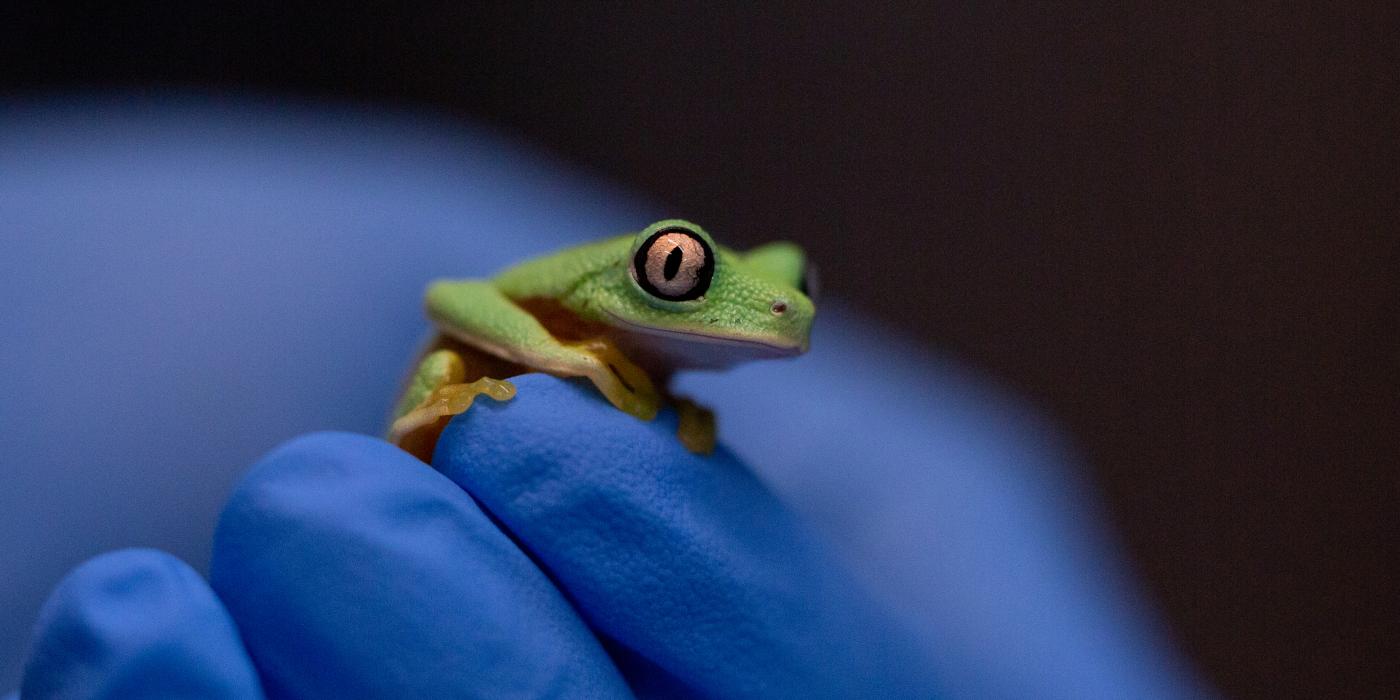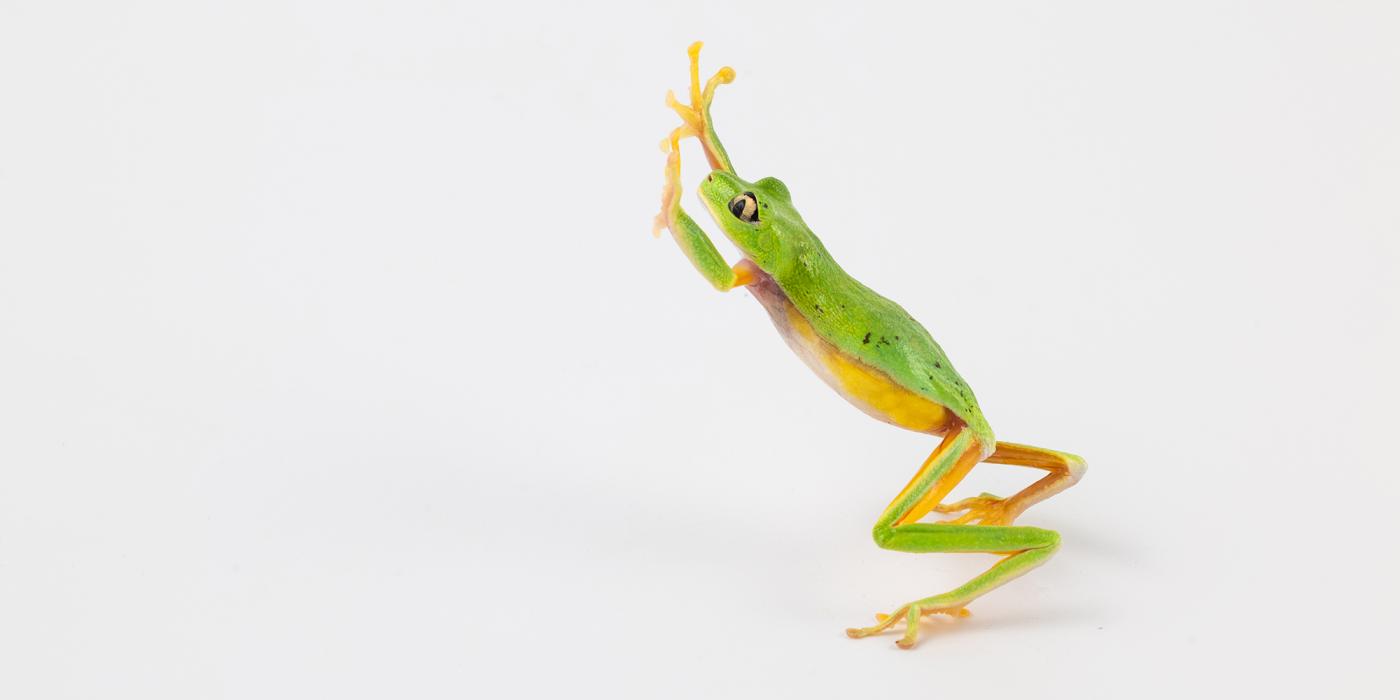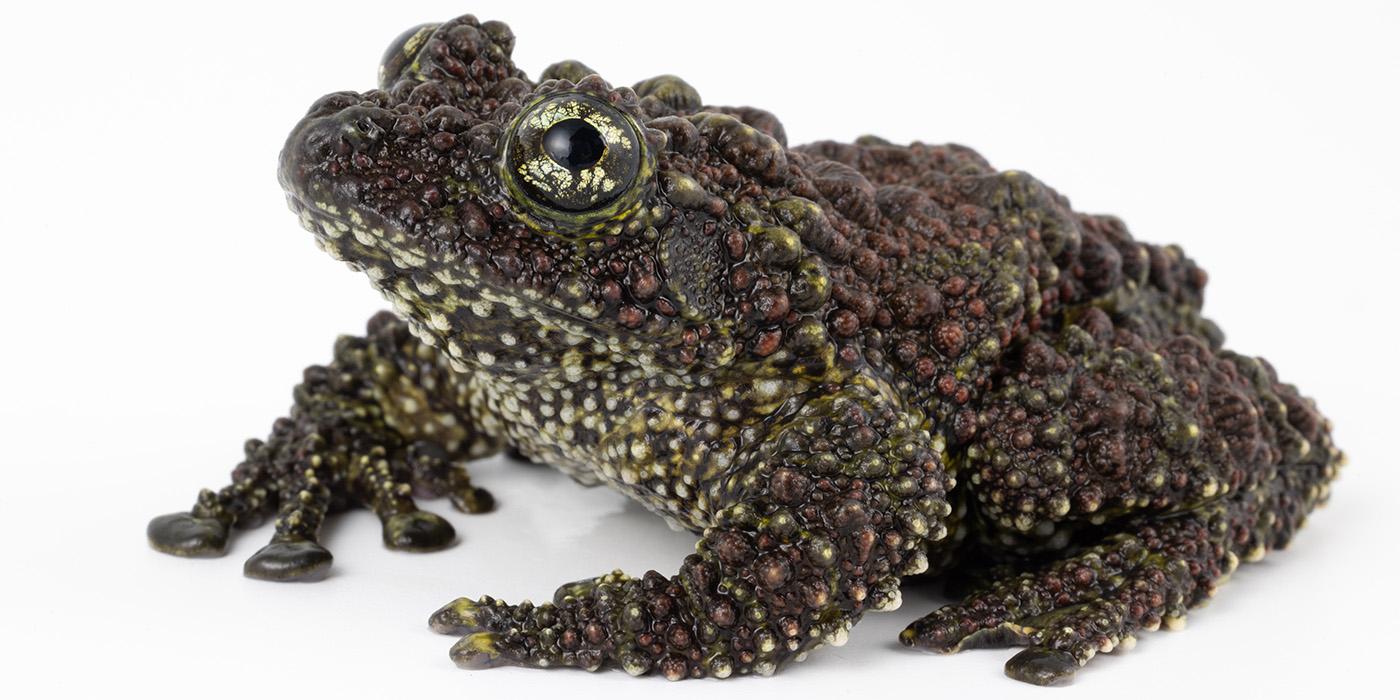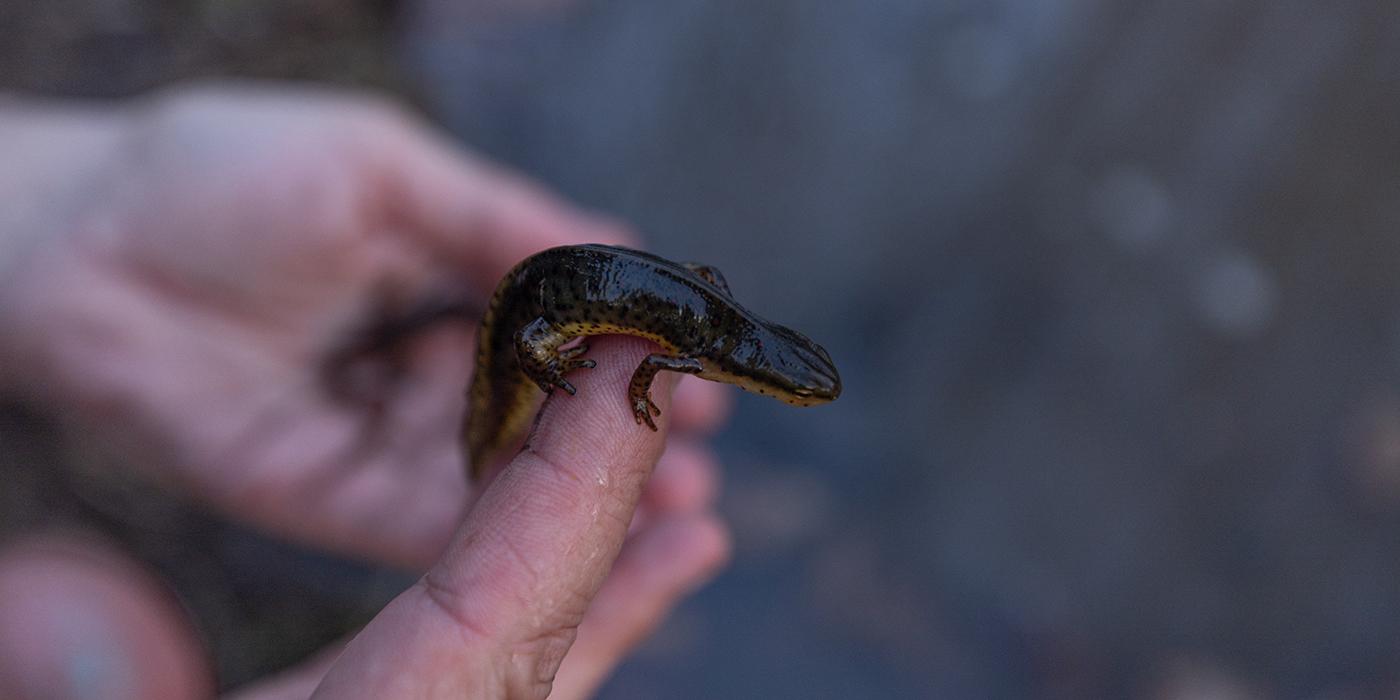New at the Zoo: Lemur Leaf Frogs
Meet the lemur leaf frog! These attractive amphibians—best known for their big, beautiful eyes—are critically endangered. The good news? Reptile Discovery Center keepers at the Smithsonian’s National Zoo are working to save them from extinction. Get the scoop on how they cracked the code on breeding this species from assistant curator Matt Evans.
What fascinates you about these frogs?
Lemur leaf frogs are nocturnal—they’re awake and active at night—so they have some amazing adaptations that set them apart from other frogs. Their large eyes have vertical pupils, enabling them to see well in the dark. Unlike other tree frogs, they do not jump to get from place to place, unless there is a predator and they need to dash away. Instead, they have very long, thin legs which they use for climbing and walking.
When the sun comes up, they tuck themselves onto the underside of leaves. Their dorsal coloring—a vibrant green—blends in perfectly, camouflaging them while they sleep. During your next visit to the Reptile Discovery Center, be sure to stop by the lemur frog terrarium and take a close look under the leaves—they’ll be hiding there!
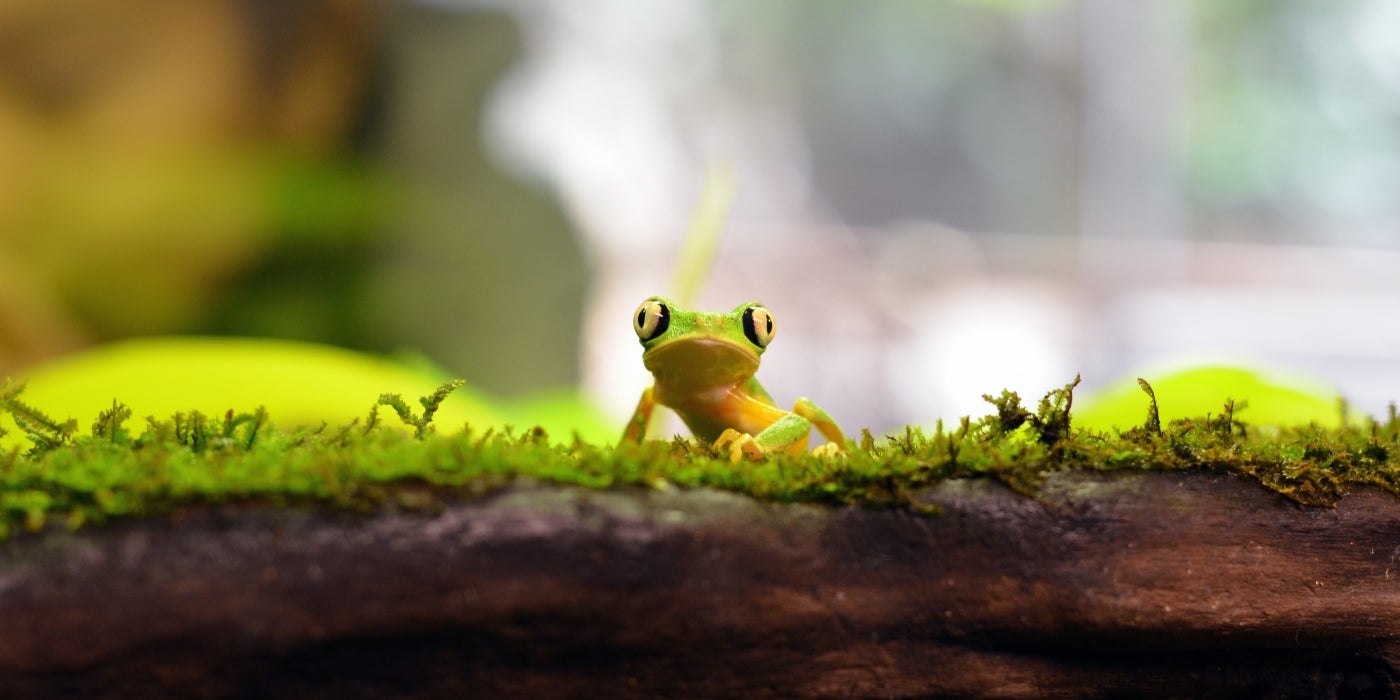
Why is the Zoo breeding them?
Due to their critically endangered status, scientists have identified lemur leaf frogs as a priority species for institutions with conservation programs. That includes us—the Smithsonian’s National Zoo in Washington, D.C., our partners at the Panama Amphibian Rescue and Conservation Project (located just outside Panama City, Panama) and the Atlanta Botanical Gardens in Georgia.
Our parent frogs came to us from the latter in May 2018. They are “founders,” which means they came from the wild. Since the early 2000s, the Atlanta Botanical Gardens has been a pioneer in saving and rescuing some of Panama’s most endangered frogs. Due to limited space and capacity, these frogs needed a new home. Moving endangered frogs is not an easy process, but we were happy to take them in at the Zoo.
How do you tell male and female frogs apart?
Lemur frogs reach adulthood around 1.5 to 2 years. Fully grown, the males are only about half the size of the females. Males also have a modified digit on each front foot—called a “nuptial pad”—which helps them clasp onto the females when breeding.
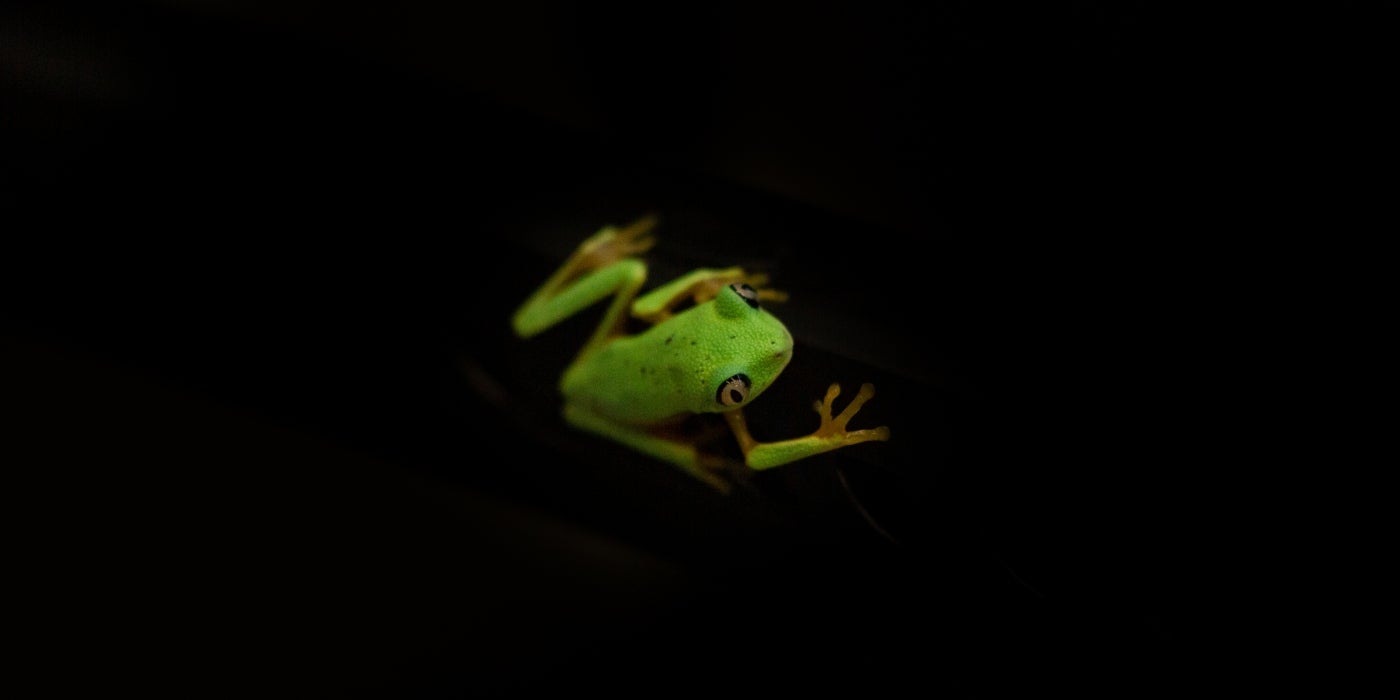
What do keepers do to “set the mood?”
When breeding any amphibian, it is paramount to understand that animal’s natural history. I have been fortunate enough to see these frogs in the wild breeding and laying eggs. Taking what I have learned from that experience and from those of my colleagues at other Zoos, I’ve tried to replicate their preferred breeding conditions.
Lemur frogs are native to the humid tropical forests of Central America, namely Panama and Costa Rica. The rainy season begins in March, and can last for several months. When the rain is at its heaviest, it triggers the frogs’ breeding season.
Animals—especially frogs—are attuned to changes in atmospheric pressure. Even from inside their terrariums at the Reptile Discovery Center, they can detect when storms form. In March and the months beyond, our team keeps an eye on the forecast. When we see approaching storms, keepers change the cycles of their misting systems to “heavy,” mimicking what is occurring outside.
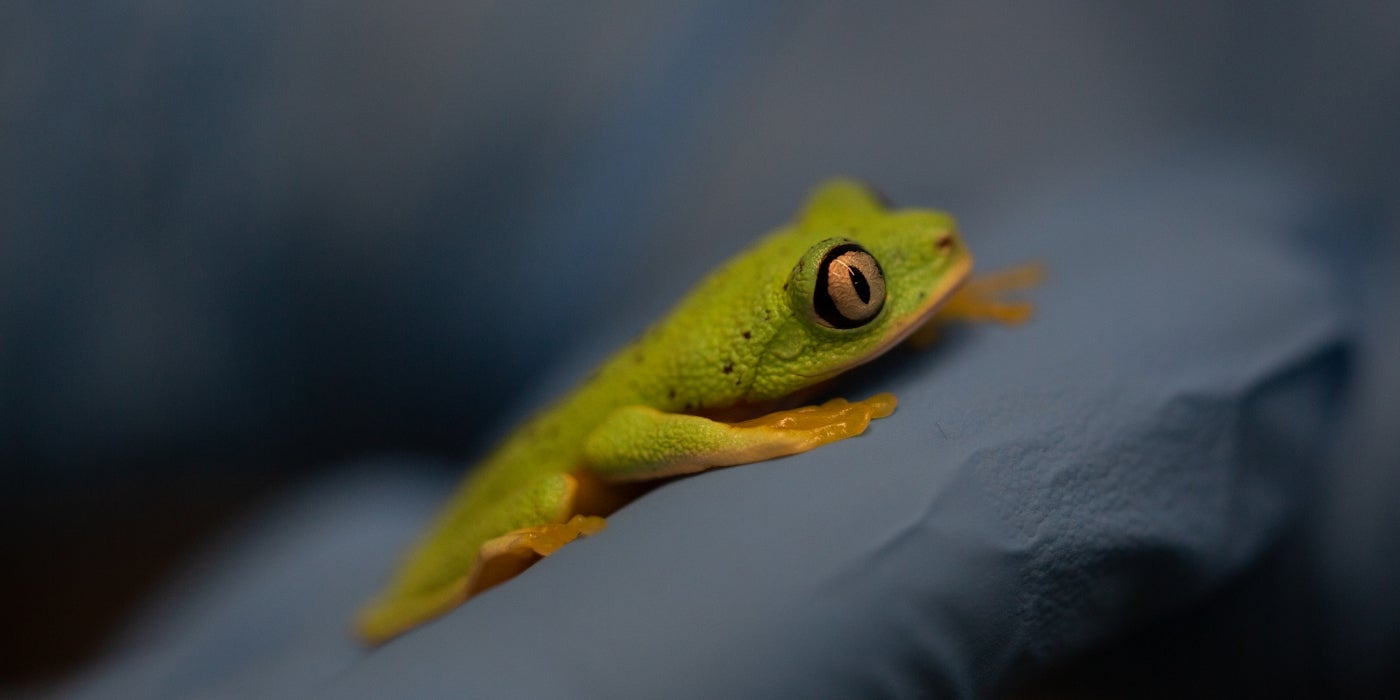
What cues do frogs give that they are ready to mate?
One might assume that we just put a male and a female together, but lemur frogs don’t mate that way in the wild. Males compete for the females’ attention. To encourage this natural behavior, we keep them in a terrarium that is large enough to house a group.
The enclosure is outfitted with live plants that hang over the water, which is prime real estate for breeding. Females will only deposit their eggs on leaves or branches located over water. The ideal spot seems to be a smooth, hidden surface, like the underside of a leaf.
Male frogs begin their courtship by singing or calling to attract females. If a female is receptive and approaches, he may try to grasp onto her from behind. This position is called “amplexus.” As the female lays her eggs, the male fertilizes them externally. Once dad has completed this task, he moves on to “woo” the next female. Although mom might stay on the leaf for a day or two, she leaves them on their own soon after.
Lemur frogs undergo metamorphosis. They begin as eggs, then transform into tadpoles and froglets before finally becoming adults!
When did the Zoo’s frogs breed?
Our first pair laid eggs in the middle of February 2020. Of the 16 eggs laid, 13 developed and hatched. The second pair laid their eggs a month later, in mid-March. That female laid 14 eggs, and 12 of them hatched.
Once the embryos develop, they wiggle and push out of their jelly-like egg and fall off the leaf, down into the water below. The tadpoles will complete the rest of their developmental life stage—referred to as “metamorphosis”—over the next 40 to 60 days. Once the final stages of metamorphosis are finished, the frogs come out of the water as miniature versions of the adults. At that stage, we call them “froglets.”
What do tadpoles and froglets eat?
We feed our tadpoles a variety of detritus (organic matter), algae and spirulina (blue-green algae) with some protein mixed in at times. Typically, they eat from the surface of the water or in the water column.
When they complete metamorphosis, the froglets are a miniature version of the adult—and about 1/4 of an adult’s size. Froglets need to hunt live prey, so we feed them small insects. As they grow, we provide them with larger insects.
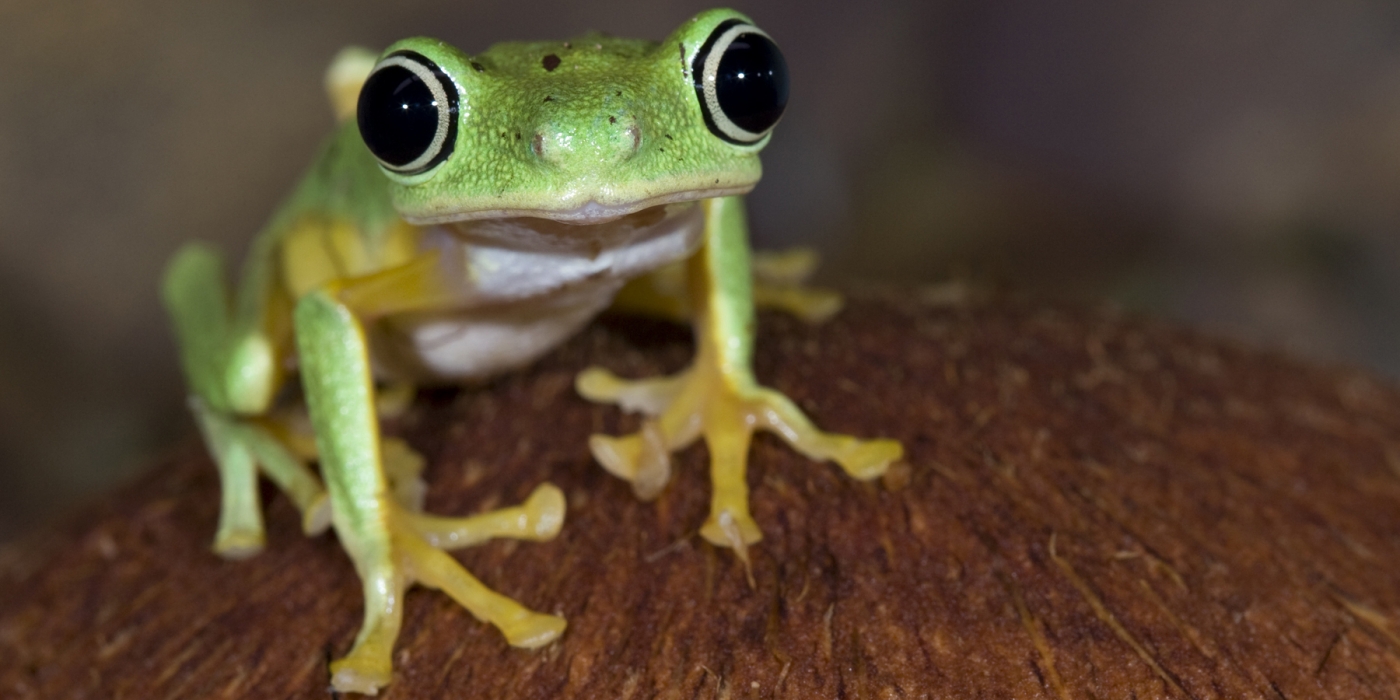
Do siblings stick together or go out on their own?
Tadpoles tend to hang around each other as long as food is plentiful. Tadpoles don’t complete metamorphosis at the exact same time. However, once they finally become froglets, they go out on their own.
Are you able to tell if they are males or females?
We won’t know the sex ratio of our young frogs for at least a year.
Now that the Zoo has successfully bred this species, what’s next?
Ideally, we want to ensure all of the founder frogs have bred and their genes are represented in the population. So, our current plan is to continue breeding this species.
Eventually, as we raise the tadpoles and froglets to maturity, we will hopefully send them to other zoos for breeding. We might even have an opportunity in the future to send frogs to the Panama Amphibian Rescue and Conservation Project in Panama, which would be fantastic!
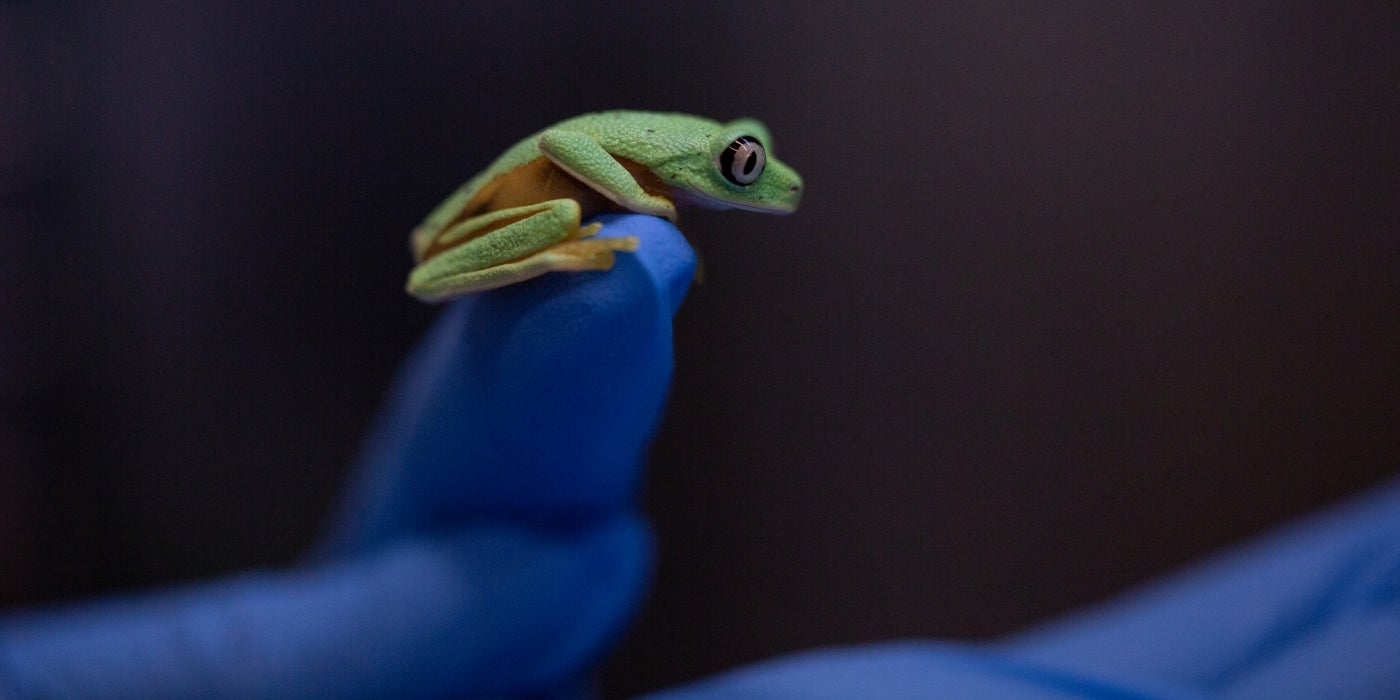
I want to help frogs! What can I do?
Many people love frogs and want to keep them as pets. Remember that owning a pet is a commitment for the lifetime of that animal! Frogs require specific (and sometimes costly) environmental, dietary and enrichment needs in order to thrive under human care. If you are able to provide these, only purchase pets from reputable organizations. Never buy an animal that was taken from the wild.
Many zoos accredited by the Association of Zoos and Aquariums have conservation programs that are putting major resources into saving amphibians from extinction. If you are able, consider supporting those efforts by making a donation.
Another great way to help is to get your hands dirty! Volunteer at your local zoo or get involved with citizen science. There a several phone apps that can help you catalog the wildlife you see and record that information for scientists studying them in the wild. By sharing what you learn about these amazing animals, it inspires other people to care about and work toward saving them, too.
This story was featured in the June 2020 issue of National Zoo News. Learn more about amazing amphibians and the scientists working to save them from extinction.
Related Species:

